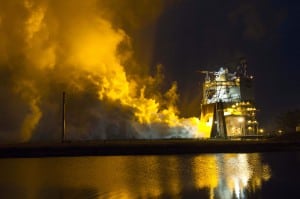
Aerojet Rocketdyne successfully completed the first in a series of hot-fire tests on the RS-25 engine, which will be used on NASA’s Space Launch System (SLS), according to a company statement.The company said the test, conducted at NASA’s Stennis Space Center, Miss., demonstrated the ability of the engine’s new computer to control the engine, from fuel-mixture ratios to power levels and performance. The RS-25 is formerly known as the Space Shuttle Main Engine (SSME). The controller on the SSME served…










